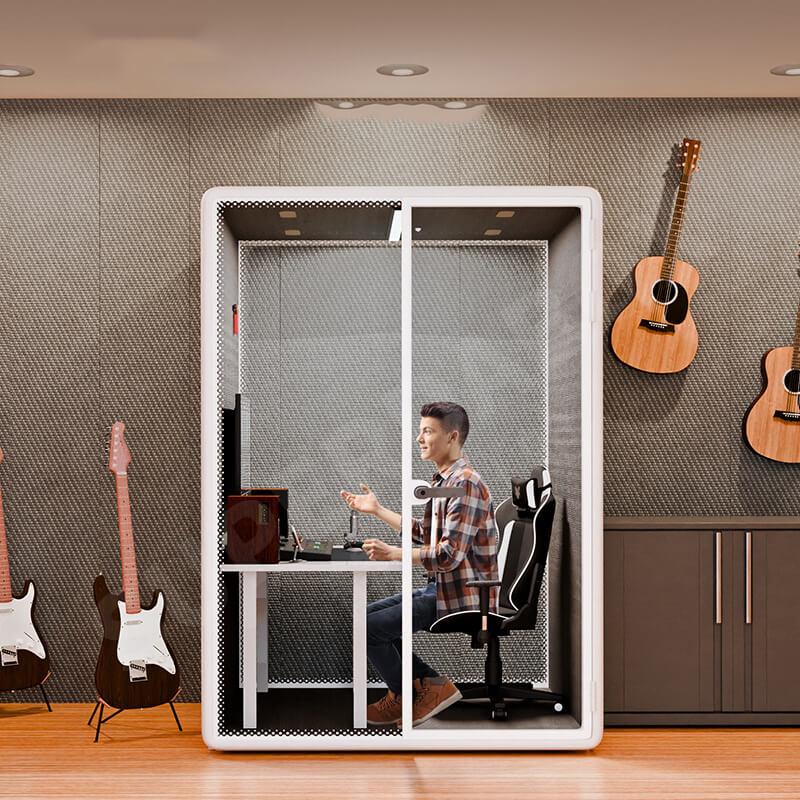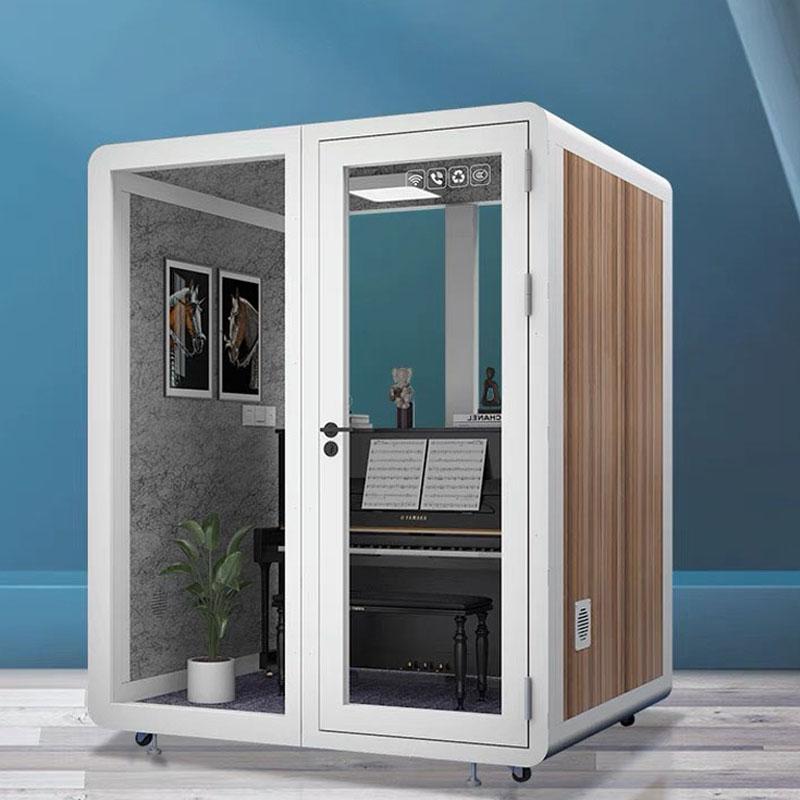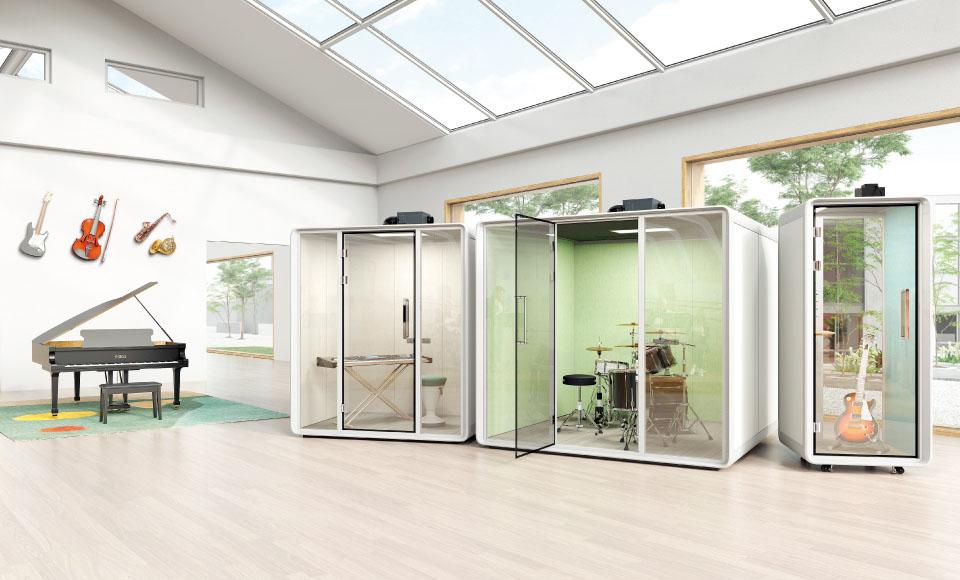Using soundproof booths in music training offers many benefits but also comes with some challenges. Here are some practical solutions and tips to maximize their effectiveness:

Add Acoustic Treatment: Even soundproof booths can have reflective surfaces that cause echoes. Use acoustic foam panels or bass traps inside to improve sound clarity.
Ventilation: Ensure proper airflow with silent ventilation systems to keep the booth comfortable without noise intrusion.
High-Quality Microphones & Headphones: Invest in good audio gear to capture and monitor sound clearly.
Recording Equipment: Use recording tools inside the booth so students can listen back and analyze their performance.
Intercom or Talkback System: Since the booth isolates sound, use an intercom or talkback mic system so teachers and students can communicate easily.
Visual Communication: Consider adding a small window or a screen for video calls during lessons.
Booth Booking System: If multiple students share the booth, create a clear schedule to avoid conflicts.
Short Sessions: To reduce fatigue and maximize focus, keep sessions inside the booth relatively short.
Proper Use: Train students on how to enter/exit quietly, avoid unnecessary noise, and treat the booth equipment carefully.
Respect Time: Encourage punctuality to maintain smooth workflow.

Avoid Isolation: Spending too much time in a small, enclosed booth can be intimidating or claustrophobic. Balance booth use with group activities or open-space practice.
Personalize the Space: Allow students to add small personal touches to the booth (stickers, small decorations) to make it less intimidating.
Regular Cleaning: Keep the booth clean and hygienic, especially if many people use it.
Technical Checks: Regularly inspect and maintain equipment and acoustic materials.

